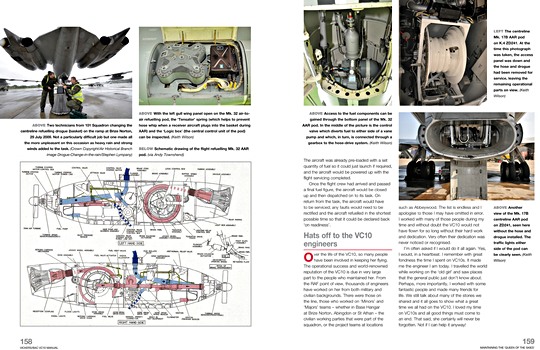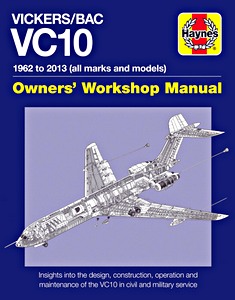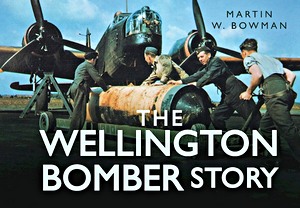Vickers / BAC VC10 Manual (1962-2013) - Insights into the design, construction, operation and maintenance (Haynes Aircraft Manual)
Designed in the 1950s to operate on long-distance routes, the four-jet Vickers VC10 saw service with BOAC and a number of other airlines from the 1960s to 1981.
It enjoyed a further career with the RAF as a strategic transport and later as an aerial refuelling aircraft. The last VC10 K3 tanker was retired by the RAF in 2013.

Keith Wilson examines the design, construction and use of the VC10, using as his centrepiece ex-RAF VC10 C1K (XR808) and VC10 K3 (ZA147) tankers at Bruntingthorpe, Leicestershire.

Detalle del libro
| Autor: | Keith Wilson |
|---|---|
| Presentación: | 160 páginas, 27.5 x 22 x 1.6 cm, tapa dura |
| Ilustración: | ricamente ilustrado con fotos en b/n y color |
| Editorial: | Haynes Publishing (GB, 2016) |
| Colección: | Haynes Aircraft Manual |
| ISBN: | 9780857337993 |

Vickers / BAC VC10 Manual (1962-2013) - Insights into the design, construction, operation and maintenance
Idioma: Inglés
Disponible en Amazon - pago segura y entrega rápido
Comprar en Amazon ESComprar en Amazon.com







